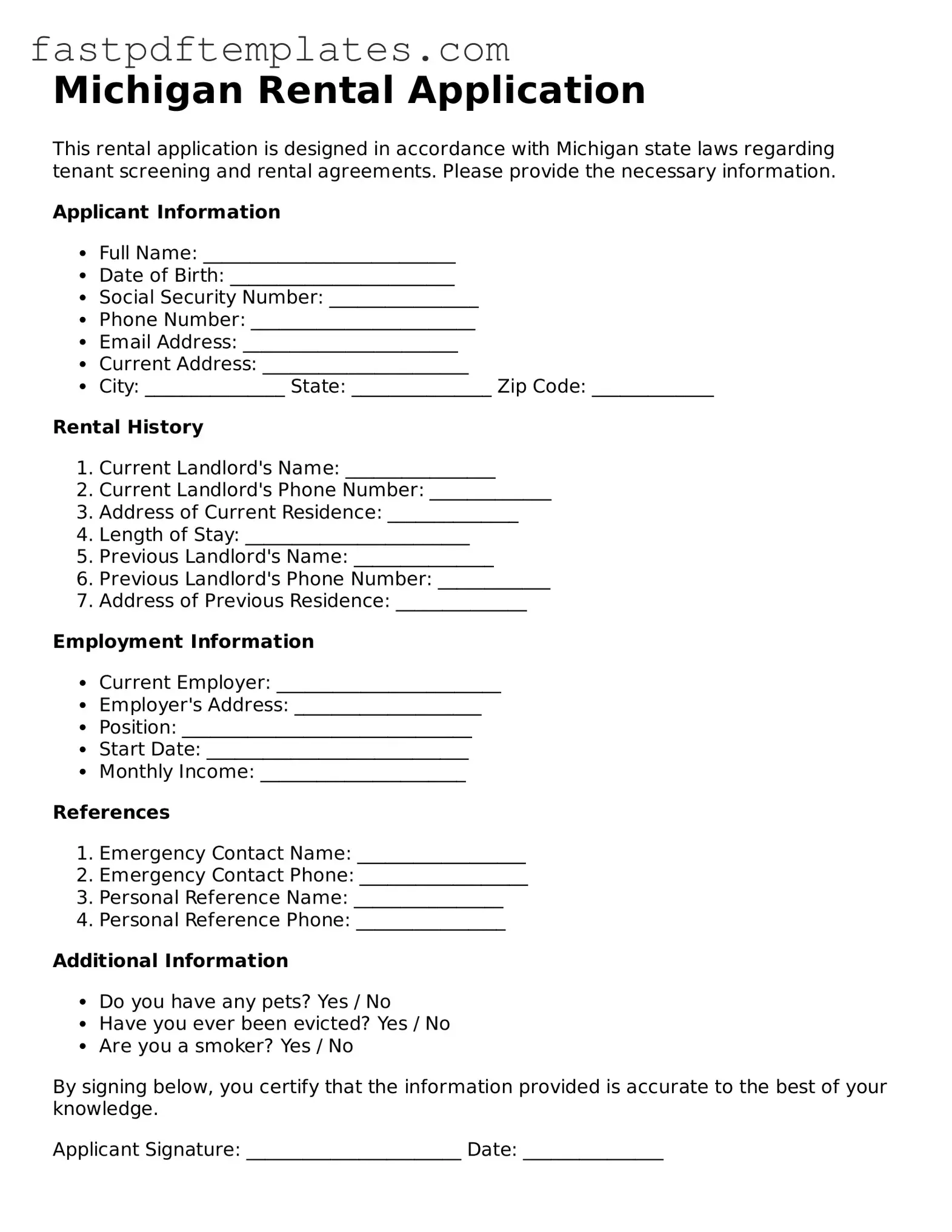The Michigan Rental Application form shares similarities with the standard Lease Agreement. Both documents are essential in the rental process, as they outline the terms and conditions of the tenancy. A Lease Agreement typically includes details about the rental period, rent amount, and responsibilities of both the landlord and tenant. Like the rental application, it requires personal information, ensuring both parties understand their obligations before moving in.
Another document that resembles the Michigan Rental Application is the Tenant Screening Form. This form is often used by landlords to gather background information on potential tenants. It includes questions about employment history, rental history, and creditworthiness. Just like the rental application, it aims to help landlords make informed decisions regarding who to rent to, ensuring a good fit for their property.
The Rental History Verification Form is also similar. This document allows landlords to verify a prospective tenant's previous rental experiences. It typically requests contact information for past landlords and may ask for details about the tenant’s behavior, payment history, and overall reliability. Both forms serve to establish trust and credibility in the tenant’s background.
The Employment Verification Form is another related document. It is used to confirm a tenant’s employment status and income level. This form usually requests the tenant’s employer's contact information and may ask for pay stubs or tax documents. Like the rental application, it helps landlords assess whether a tenant can afford the rent, ensuring financial stability during the lease term.
Similar to the Michigan Rental Application, the Guarantor Application is designed for tenants who may need a co-signer. This document collects information about the guarantor’s financial background and creditworthiness. It helps landlords secure additional assurance that rent will be paid, especially when the tenant's financial situation is uncertain.
The Credit Check Authorization Form is also akin to the rental application. This document allows landlords to request a credit report from a tenant. It typically requires the tenant’s consent and basic personal information. Both forms aim to provide landlords with insights into a tenant's financial responsibility, which is crucial for making rental decisions.
The Pet Application Form is another document that shares similarities. For tenants with pets, this form collects information about the pet’s breed, size, and vaccination history. It ensures that landlords can assess the suitability of allowing pets on their property, much like how a rental application evaluates the tenant’s overall profile.
The Move-In Checklist is also related to the rental application. While it serves a different purpose, both documents are part of the rental process. The checklist helps tenants and landlords document the condition of the property before moving in. This ensures that any existing damages are noted, protecting both parties from disputes later on.
Lastly, the Rental Agreement Addendum can be compared to the Michigan Rental Application. An addendum is used to modify or add specific terms to the original lease agreement. Like the rental application, it requires clear communication between the landlord and tenant, ensuring that all parties are aware of any additional rules or conditions that may apply during the tenancy.
